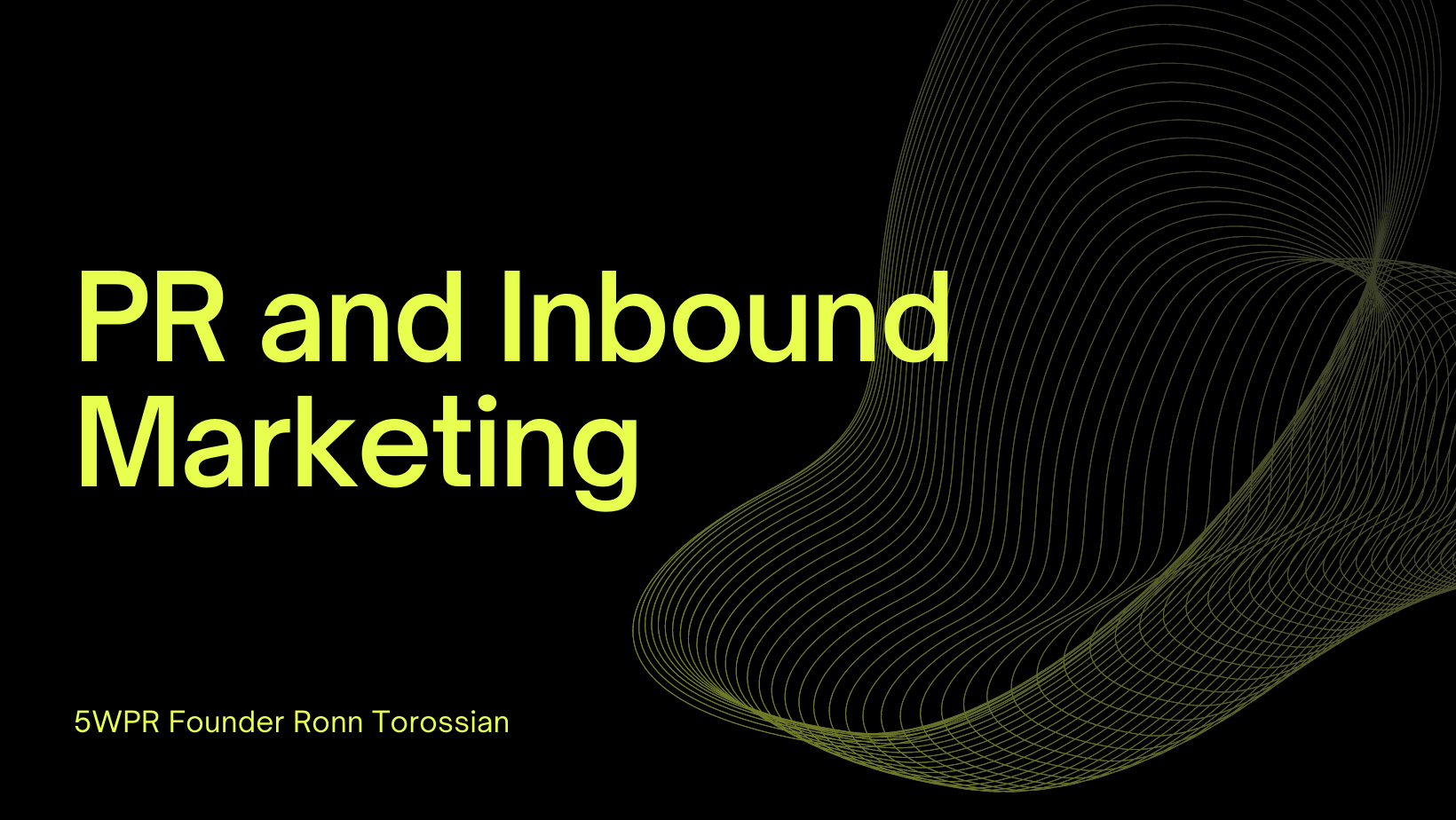
PR and Inbound Marketing
PR and inbound marketing are crucial tools in a company’s marketing strategy.
While PR and inbound marketing can share content, channels, and the tone of the brand – they may require different approaches for a successful campaign.
The Difference Between PR and Inbound Marketing
PR deals with how a company or brand relates to the public and its potential customers. It can also include appealing to the company’s shareholders, investors, and media persons.
The primary purpose of PR is to promote a favorable reputation for the brand. It is usually accomplished by communicating the brand’s mission, goals, and prerogative through various media channels.
PR remains essential for companies of every size – big, medium, and small. It is how the brand establishes itself as reputable and fosters trust among its potential customers.
Inbound marketing, on the other hand, is primarily directed at the brand’s potential customers. The purpose of inbound marketing is to create authoritative content that can be of relevance to the reader, which would draw them to the brand’s offerings.
Inbound marketing uses various media channels to showcase helpful content that can attract, engage, and appeal to their potential customers. In other words, the function of inbound marketing is to generate leads.
While PR and inbound marketing may use similar actions and strategies, they are fundamentally different. While PR focuses on building the brand’s reputation, inbound marketing’s focus is to drive sales. While both may use similar strategies, there are certain key differences between the media channels and messages that PR and inbound marketing use.
Inbound marketing tends to focus on owned media. The goal of inbound marketing is to create a brand story about the products and services and push out content on the brand’s own platform.
PR, on the other hand, relies on earned media such as positive reviews, word-of-mouth, or feature pieces in relevant magazines and newspapers. The brand will tend to have more control over owned media, which makes content strategy a crucial part of sales.
How PR and Inbound Marketing Overlap
PR and inbound marketing – both rely on the development of quality content and the use of relevant channels.
However, PR should focus on the story of the brand, that is, how the product or service may benefit the customer.
If there is a crisis, the PR team is responsible for any damage control. The primary purpose of PR will always revolve around maintaining the reputation of the brand, irrespective of the media channels used. Inbound marketing also relies on solving the pain points of the potential customer.
The content that the brand pushes out should not only be high-quality – it should also articulate how the product or service can benefit the customer.
PR and Inbound Marketing Working Together
PR and inbound marketing remain intertwined for a brand. PR helps raise the image and reputation of the company, which increases the public’s interest in the brand’s offering.
Inbound marketing creates a sales funnel that transforms interest into a successful sale.
Ronn Torossian is the Founder & Chairman of 5W Public Relations, one of the largest independently-owned PR firms in the United States.
With over 20 years of experience crafting and executing powerful narratives, Torossian is one of America’s most prolific and well-respected Public Relations professionals.
Discover more from Ronn Torossian
Ronn Torossian’s Professional Profile on Muck Rack
GuideStar Profile for Ronn Torossian Foundation
Ronn Torossian’s Articles on Entrepreneur
Ronn Torossian’s Blog Posts on Times of Israel
Ronn Torossian on SoundCloud
PR and inbound marketing are crucial tools in a company’s marketing strategy. While PR and inbound marketing can share content, channels, and the tone of the brand – they may require different approaches for a successful campaign. The Difference Between PR and Inbound Marketing PR deals with how a company or brand relates to the public and its potential customers. It can also include appealing to the company’s shareholders, investors, and media persons. The primary purpose of PR is to promote a favorable reputation for the brand. It is usually accomplished by communicating the brand’s mission, goals, and prerogative through various media channels. PR remains essential for companies of every size – big, medium, and small. It is how the…